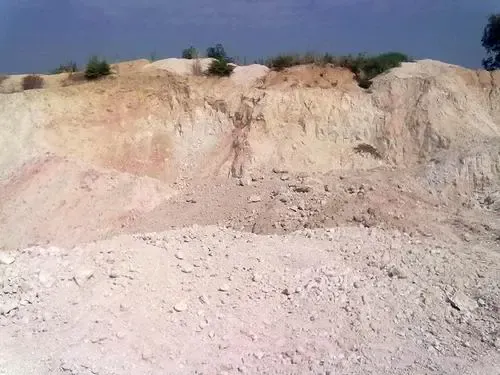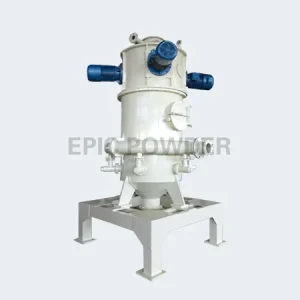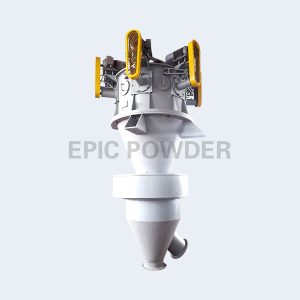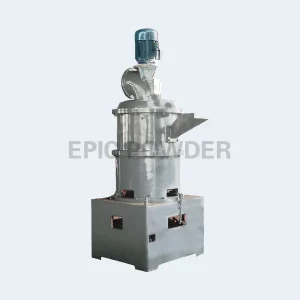Kaolin is a valuable non-metallic mineral. It is mostly kaolinite clay. It is a widely used natural mineral material. Its unique properties and abundant reserves make it vital to many industries. These include ceramics, plastics, and coatings. Kaolin’s main components are aluminum oxide and silicon dioxide. It has a unique white, delicate texture, so it is often called dolomite. The mineral got its name from its first discovery in Gaoling Village, Jingdezhen City, Jiangxi Province.

The best quality varieties are pure white, like snow. They have a fine, soft texture and an earthy look. This soil-like ore feels smooth. It has great plasticity. So, it can be easily shaped and processed. It also has excellent fire resistance. It can stay stable in high temperatures. It won’t melt or deform easily. Kaolin’s unique properties make it a vital raw material in many industries.
Kaolin composition
Kaolin is mainly composed of kaolinite minerals. These include kaolinite, halloysite, hydromica, illite, and montmorillonite. These clay minerals are the main skeleton of kaolin. It may also contain a small amount of quartz, feldspar, and other detrital minerals. They can improve kaolin’s performance. Kaolin is widely used in many fields. This is due to its unique physical and chemical properties. In the papermaking industry, kaolin is widely used as a coating and filler. It greatly improves the gloss, whiteness, and smoothness of paper. It also boosts the paper’s strength and durability. In ceramics, kaolin is a key raw material. Its purity affects the quality of ceramics. It impacts their sintering, strength, and thermal stability.
Common applications
Besides papermaking and ceramics, kaolin is vital in the coating industry. It is used as an extender pigment in coatings. It improves their quality and performance. In the rubber industry, it is a filler. It improves the durability of rubber products. Grindability and tensile resistance. The enamel glaze industry uses kaolin’s good plasticity and fire resistance. It’s a basic raw material to prepare various types of enamel. Also, kaolin is the main raw material for white cement. It’s processed by calcination to make high-quality white cement clinker.
In the industrial field, it has a wide range of applications. It is also used in plastics, paints, and pigments. It’s in grinding wheels, pencils, cosmetics (like soap), pesticides, and pharmaceuticals. Lastly, it’s in textile slurries. Catalysts and fillers in coatings and petrochemicals. Waterproofing materials and fillers in building materials. Kaolin is now vital to national economic and social development. Its unique properties and many uses make it essential.
Kaolin is a common and important clay mineral in nature. It is formed by the weathering of feldspar or other silicate minerals in igneous and metamorphic rocks in acidic, alkali-free media.
Industrial uses
Kaolin is a must-have mineral for many industries. These include papermaking, ceramics, rubber, chemicals, coatings, medicine, and national defense.

The ceramic industry is the earliest industry to use kaolin and the industry with the largest amount of kaolin. The general amount is 20% to 30% of the formula. Kaolin’s role in ceramics is to add Al2O3. It aids in forming mullite and improves chemical stability and sintering strength. During firing, kaolin decomposes to form mullite. It is the main framework of the body’s strength. It prevents product deformation, widens the firing temperature, and adds some whiteness to the body. Kaolin has some plasticity, adhesion, and bonding strength. This gives porcelain mud and glazes good formability. It also makes ceramic mud easy to turn, grout, and shape. If used in wires, it can increase insulation and reduce its dielectric loss. Ceramics require kaolin to meet strict standards. They include plasticity, bonding, drying shrinkage, drying strength, sintering shrinkage, sintering properties, refractoriness, and whiteness after firing. They also require specific chemical properties. Firing can reduce whiteness and cause spots. Coloring elements like iron, titanium, copper, chromium, and manganese are to blame.
Kaolin should be as fine as possible. This gives the porcelain mud good plasticity and drying strength. But, for fast casting processes, coarser particles are needed. They increase the grouting and dehydration speeds. Also, the degree of crystallization of kaolinite in kaolin will greatly affect the performance of the porcelain blank. If crystallization is good, plasticity and bonding strength will be low. Drying shrinkage will be small, the sintering temperature high, and impurities low. Conversely, if crystallization is poor, plasticity will be high. Drying shrinkage will be large, the sintering temperature low, and impurities high.



